- Learning time
- 40 minutes
- First play time
- 120 minutes
Tigris and Euphrates
Designed by: Reiner Knizia
Tigris and Euphrates are the ancient rivers running through Mesopotamia, and you the players are using your wits and tactics to establish the most dominant kingdoms in the land.
How you do this is by careful placement of your four leaders (the same symbol in four different colours on wooden discs) and matching coloured tiles on the board, which represents the landscape. A tile placed in the same kingdom – kingdoms being a collection of tiles that join up orthogonally – as a leader of the same colour gets you a point of that colour (points also come in the four colours), and on your turn you have two actions to spend: you can use them to add (or moving) a leader to the board, or add a tile, or any combination thereof.
But as the game progresses and more tiles appear, there is less room for your expanding kingdoms and they will start to overlap, causing conflict. There’s two types of conflict – an internal one, where an opponent puts a leader into a kingdom where you have a leader of the same colour, and an external one, where somebody adds a tile to the board that links two kingdoms together. These disputes are resolved differently: external conflict involves comparing tiles of the colour that is in dispute, and internal conflict is always resolved with red tiles. Leaders can only ever be placed adjacent the red tiles, and note kingdoms can join peaceably if there is not more than one leader of a particular colour when the two link together. To resolve the conflict, players can choose to add from the six tiles in their hand (which is hidden) with the attacking player adding first and defending players win ties. Winning the battle leads to yet more points! And joining kingdoms also rewards the active green leader with a ‘wild’ cube that can be scored as any colour.
If a player manages to get four tiles of the same colour adjacent, making a square, they can flip them over to build a temple, which will score you points at the end of your turn when you have a leader of the matching colour in the same kingdom as the temple.
Finally each player has a couple of Catastrophe tiles, which they can place judiciously (costing an action) to stop either tiles or leaders ever appearing on a certain spot, or remove opponents’ leaders from the board.
At the end of your turn, you replenish up to 6 tiles again. This ever-fluctuating battle between players continues until the tiles in the bag run out, and then – crucially – scores are compared for all four colours with your lowest total in one colour representing your overall score – thus, having a huge amount of blue points, for instance, means nothing if you’ve collected no green points at all.
The guru's verdict
-
Take That!
Take That!
Tigris and Euphrates is all about bludgeoning - or sneaking - your way in to other people's territories and claiming points for ousting them.
-
Fidget Factor!
Fidget Factor!
Although the rules - apart from getting your head around the two types of combat - are not terribly voluminous, Tigirs and Euphrates requires real thought and calculation of when to attack or when to play safe. For that reason (and it's combative nature) it's not really a game for youngsters.
-
Brain Burn!
Brain Burn!
The first-play-bump with Tigris will be bigger than some, as it resembles not so much a battleground of kings as an abstract puzzle, with great nuance and depth. As well as the evolving battleground covered above, there is also the possibility of green leaders claiming 'wild' points on the board, which you can add to a colour of your choice at the end of the game. The rules are actually rather light, but the depth of play is impressive.
-
Again Again!
Again Again!
There is much randomness in Tigris and Euphrates; tactics are very much dictated by the tiles, and you don't get to choose them!


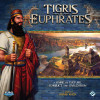
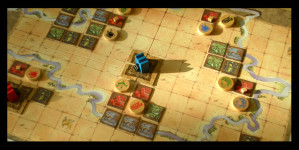
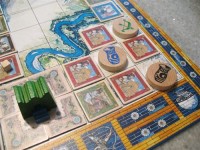

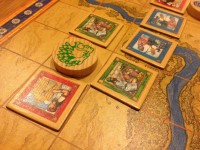
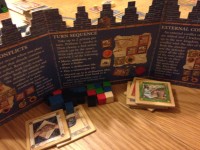
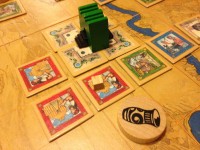


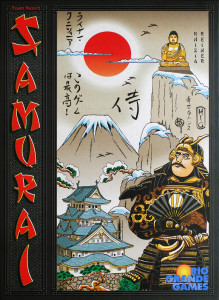
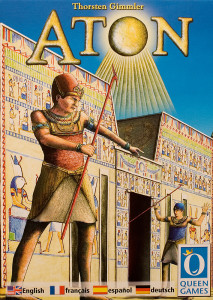
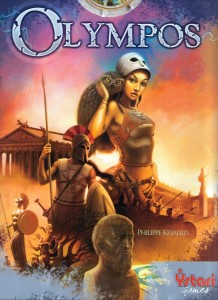

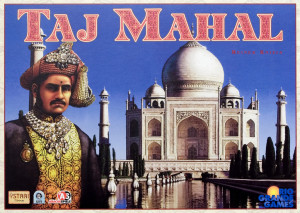
Sam says
Regarded as a classic, Tigris and Euphrates is nearly 20 years old and, in a market with thousands of new games each year, still going strong. Nonetheless, it's not for everyone. If you want nippy gameplay and a tangible theme, then it may leave you nonplussed. The rules can feel unintuitive at first and the board hard to read at a glance. But... if you like a multi-player battle, with sneaky moves, outright aggression and canny strategies, then this will tick a bunch of boxes.